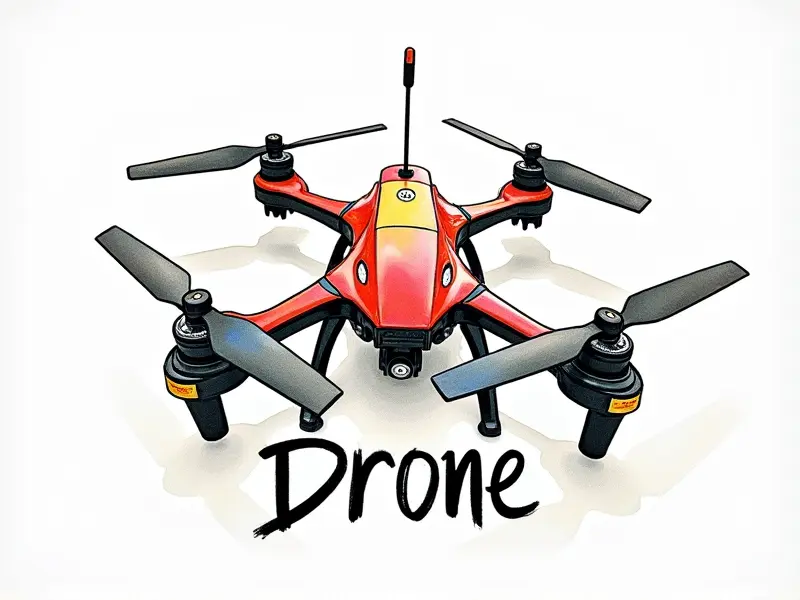DIY propeller replacements?

How to Make Your Own RC Propellers
Replacing or repairing propellers on your remote-controlled (RC) drones or airplanes can be a daunting task, especially if you're not familiar with the process. However, crafting custom propellers at home is both cost-effective and rewarding. This guide will walk you through the steps to make your own RC propellers.
Crafting Custom Propellers for RC Drones
Customizing your drone's propellers can significantly enhance its performance. Whether you're looking to increase speed, improve stability, or simply experiment with different designs, making custom propellers is a great way to personalize your quadcopter.
Step-by-Step DIY Propeller Making
- Select the Right Material: Choose lightweight and durable materials such as balsa wood, carbon fiber, or plastic sheets. Balsa wood is popular for its lightness and ease of shaping.
- Determine the Specifications: Measure your existing propeller to determine the diameter, pitch, and blade count needed for your new custom propellers.
- Cut the Propeller Shape: Use a jigsaw or laser cutter to cut out the basic shape of the propeller. Ensure that each blade is symmetrical for optimal performance.
- Sand and Smooth Edges: Sand the edges of your propeller to remove any rough spots, ensuring smooth operation and reducing noise.
- Add Weight Balancing: Balance your propellers using a propeller balancer tool. Uneven weight distribution can cause vibrations and reduce flight stability.
Guide to Homemade RC Propeller Replacement
Replacing damaged or worn-out propellers is essential for maintaining the performance of your RC aircraft. Follow these steps to replace your propellers effectively:
- Identify Damaged Parts: Inspect your propellers for cracks, chips, or other signs of wear and tear.
- Select Replacement Propellers: Choose replacement propellers that match the specifications of your original ones. Consider upgrading to stronger materials if necessary.
- Remove Old Propellers: Unscrew the old propellers from the motor shaft using a wrench or screwdriver.
- Install New Propellers: Screw in the new propellers tightly but avoid over-tightening to prevent damage to the motor.
Simple DIY Method for RC Propeller Repairs
If your propellers are slightly damaged, you can often repair them rather than replacing them entirely. Here’s how:
- Repair Cracks and Chips: Use epoxy or super glue to fill in small cracks and chips on the blades.
- Sand Down Rough Edges: Sand down any rough edges or burrs that may have formed due to wear and tear.
- Balancing After Repair: Rebalance your propellers after repairs to ensure they spin smoothly without vibrations.
Build Lasting RC Propellers at Home
To build durable and long-lasting propellers, follow these tips:
- Select High-Quality Materials: Use materials that are both lightweight and strong to ensure longevity.
- Properly Sand and Finish: Smooth out any rough edges or surfaces to reduce wear over time.
- Balancing is Key: Regularly balance your propellers to maintain optimal performance and prevent damage.
Creating Perfect FPV Drone Props at Home
First-person view (FPV) drones require precise and efficient propellers. Here’s how to create perfect props for your FPV setup:
- Select the Right Diameter and Pitch: Choose a diameter and pitch that provide the best balance of speed and stability.
- Use High-Quality Adhesives: Ensure all joints are securely bonded with high-quality adhesives to prevent leaks or failures in flight.
- Balancing for Smooth Flight: Use a propeller balancer tool to ensure your props spin smoothly and efficiently.
Customizing Your Quadcopter with DIY Props
Customizing your quadcopter’s propellers can significantly enhance its performance. Here are some tips for customizing:
- Tune Propeller Pitch: Adjust the pitch of your propellers to optimize speed and stability.
- Experiment with Different Materials: Try out different materials such as carbon fiber or plastic to find what works best for you.
- Balancing for Precision: Regularly balance your custom props to ensure they perform at their peak efficiency.
DIY RC Airplane Propeller Guide
Making propellers for RC airplanes involves similar steps but may require different considerations due to the nature of fixed-wing aircraft. Here’s a guide:
- Select Appropriate Diameter and Pitch: Choose dimensions that optimize lift and thrust for your specific airplane model.
- Balancing is Crucial: Ensure proper balance to prevent vibrations and improve flight stability.
- Test and Adjust: Test your propellers in a controlled environment before full-scale flights to ensure they perform as expected.
Step-by-Step DIY Propeller Replacement Tutorial
This tutorial provides detailed instructions for replacing damaged or worn-out propellers on your RC aircraft:
- Inspect and Identify Damaged Parts: Carefully examine each propeller for signs of damage.
- Select Appropriate Replacement Propellers: Choose replacements that match the specifications of your original ones.
- Remove Old Propellers: Unscrew old propellers from motor shafts using appropriate tools.
- Install New Propellers: Screw in new propellers tightly but avoid over-tightening to prevent damage.
Make Stronger Propellers for Your Quadcopter
To make stronger and more durable propellers for your quadcopter, follow these steps:
- Select Durable Materials: Use materials such as carbon fiber or reinforced plastic to increase strength.
- Balancing is Essential: Regularly balance your propellers to ensure they spin smoothly and efficiently.
- Tune for Optimal Performance: Adjust pitch and diameter to optimize speed, stability, and efficiency.
Conclusion
Making your own RC propellers is a rewarding endeavor that can enhance the performance of your drones or airplanes. By following these detailed steps and tips, you can create durable, efficient, and customized propellers tailored to your specific needs. Whether you are repairing existing props or building new ones from scratch, the process allows for greater control over the quality and functionality of your aircraft.

